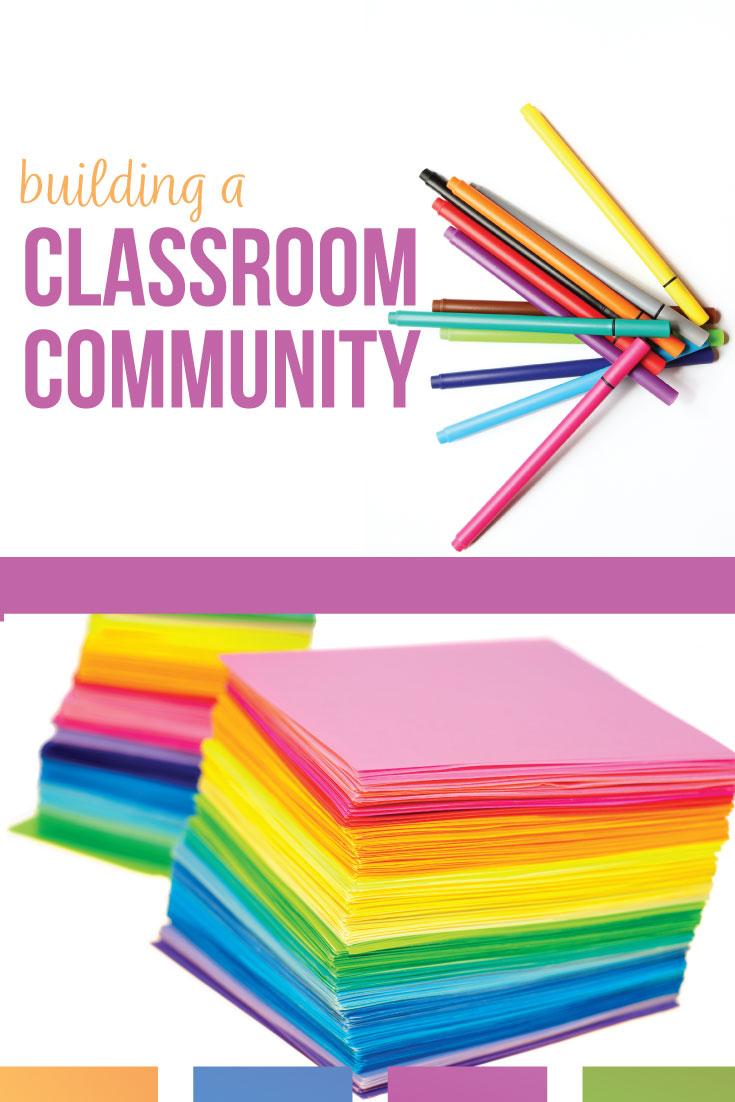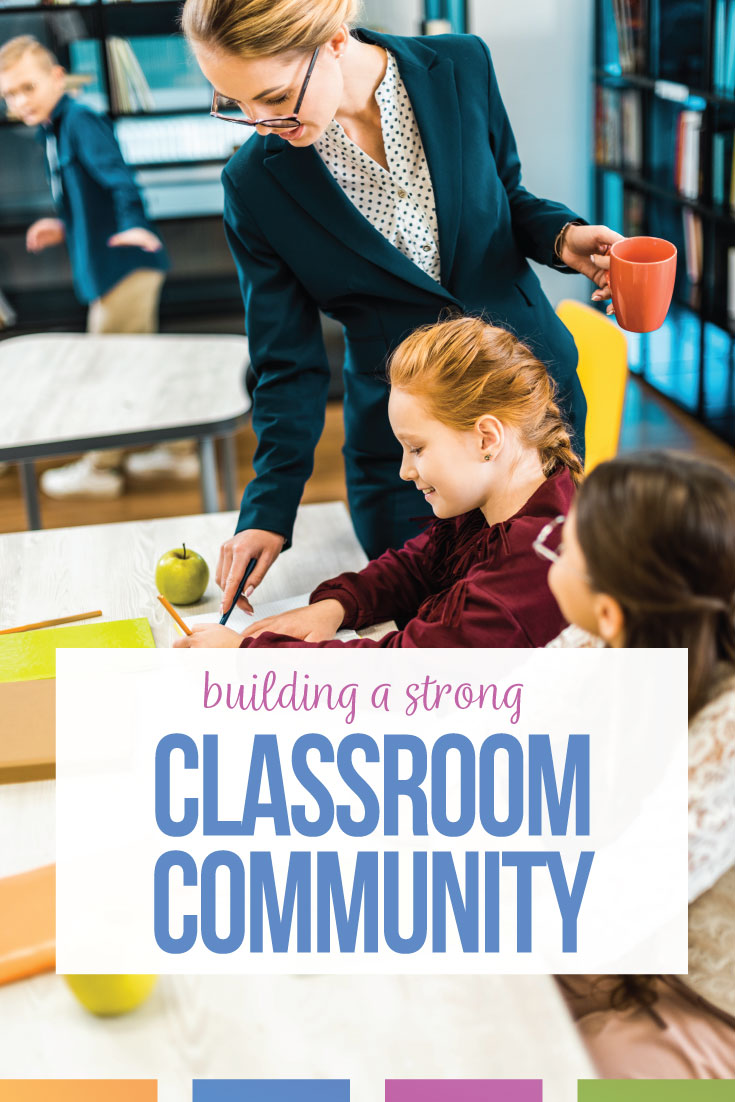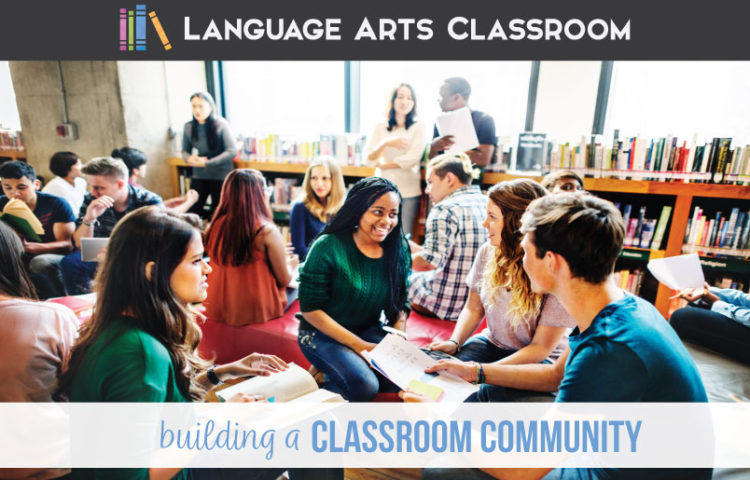Creating a classroom community takes time, patience, and conscious effort. Always looking to grow, I brainstormed methods and approaches with five of my blogging friends.
A strong classroom community can improve lessons and relationships. Honestly, once I started purposefully building a community within my four walls, my days became easier. No, students and I are not friends. Rather, I look at creating a classroom community as part of my lessons.
Through our brainstorming, we realized that creating a classroom community often centered around personal connections, reflections, and explorations of our content, plus a generous dose of fun. Below, you’ll find the twelve approaches for creating a classroom community in the secondary classroom.
Personal connections
Creating a classroom community can occur with interactions, with constructed opportunities to interact.
Classroom Meetings
One increasingly popular way to build classroom community is through classroom meetings. Melissa from Reading and Writing Haven mentions that teachers can run them in a myriad of ways, but when done effectively, they promote togetherness, respect, understanding, generosity, ownership, and empathy.
Interview Challenge
Write on With Miss G believes that one simple way to strengthen classroom community is through a “Partner Interview Challenge”, which is an engaging activity that challenges students to get to know one of their peers by asking the right questions that will generate the details needed to write an engaging mini-story about their partner. More information on how to facilitate this activity can be found here.
Use Content
A strong classroom community interacts with the content. When students appreciate the connection of the content to their lives, lessons become stronger.
First Chapter Fridays
If you follow this blog, you know that I adore reading new books with my students each Friday. First Chapter Fridays work splendidly with secondary students. Introduce students to varying genres, authors, and perspectives by showcasing a different story every Friday. This low-pressure approach emphasizes community as students and teacher discuss literature. Looking for ideas? Follow along on Instagram and search #FirstChapterFriday.
Book Discussions
Discussing books is the perfect avenue for building community. The best part is…there are so many ways to do so. Try running a book club. It can revolutionize the way you bond with students and create a community that values literacy at a much higher level than you may anticipate. Talk with students about what you are reading. Try using a Reading Ladder or these Why Read? reflection activities to help guide conversation and to add some flair to your classroom decor.
Word Wall
Another easy way to build classroom community is by giving students more ownership of their classroom. One way to achieve this is by allowing students to choose their own vocabulary words and creating a community word wall. You can see how this works here: How and Why to Use Word Walls with Older Students

Reflect!
How to build community in the classroom? Reflection is necessary.
Teacher Reflection
Building a positive classroom community requires reflection from the teacher. What attitudes does the classroom leader display? Do students believe they can learn? Is the teacher modeling proper behavior? Does classroom decor emphasize your beliefs? Ask yourself these questions when considering your classroom community.
Student Reflection
A personality test is the perfect activity to boost classroom community because it will help your students understand themselves and their peers. This works well at the beginning of the year or semester or any time you want a “fresh start” or a chance to get to know your students as human beings. The online 16 Personalities test gives students valuable insight into who they are. Have the students take the test, facilitate some reflective writing, and then let students discuss with their peers. If you’re looking for a ready-to-print reflection sheet, check out this visually appealing resource. This activity will challenge students to be introspective as they think about their strengths and weaknesses, ability to work with others, approach to school/work, and more! In addition, the online test provides great practice at reading, summarizing, evaluation, and reflecting upon information.
Human Reflection
Sometimes resetting classroom community, whether it be after spring break, winter break, or starting brand new at a semester, can be as simple as a one day poetry lesson. Amanda Cardenas demonstrates how to do this with the poem “How to Be a Person” in her blog post. This powerful poem by Shane Koyczan has students rethink what it means to carry themselves as human beings and what they project and contribute to not only their own classroom communities, but also the world around them.
Students need strong and positive relationships with each other and the teacher in order to learn, says Amanda from Amanda Write Now. Incorporating “Warm and Fuzzy Wednesdays” into your week or month can do just the trick to strengthen those relationships. Learn more about “Warm and Fuzzy Wednesdays” in the article, I’m More Than an English Teacher. The article also discusses how incorporating meditation, coloring, fort building and digital literacy can also support a stronger community in your class.
Have fun!
A classroom community should be warm and welcoming.
Games
Playing games is the perfect way to break down walls in your classroom. There are many community building games out there, but if you’re looking for some unique, simple games you won’t find anywhere else check out this article: 5 Fun Activities for the Day After a Long Break. If you like that article you’ll also love this one: 5 Super Simple Games to Play with Your Students Whenever.
Marshmallows?!
Another way to make classroom community building fun is to break out the stickiest, messiest food item possible – MARSHMALLOWS! Here are some ideas to take marshmallows and some team building challenges to the next level as you grow together as a classroom community.
Attendance Routine
A simple change you can make to strengthen your classroom community each day is by adjusting your attendance routine. Like a lot of other inspiration, this idea comes from Instagram. Instead of simply calling a student’s name and having them say “here” or “present” The Towine Teacher asks students a different this or that question each day. Ashley Bible from Building Book Love recently started this same practice with great results. Asking questions like, “Netflix or YouTube?” “Coffee or Hot Chocolate?” “Which day makes the best snow day: Monday or Friday?” makes for a fun and communal way to start each class period! You can find a list of fun questions here: Instagram Made Me Do It: Teaching ideas from the gram

Please, please! Adjust these tricks and make them work for your community of learners. Creating a classroom community takes time, but your classroom management and general day will improve from your efforts. If you’re looking for a fast way for how to build community in the classroom, we don’t have them. Creating a classroom community takes time, errors, and patience.

